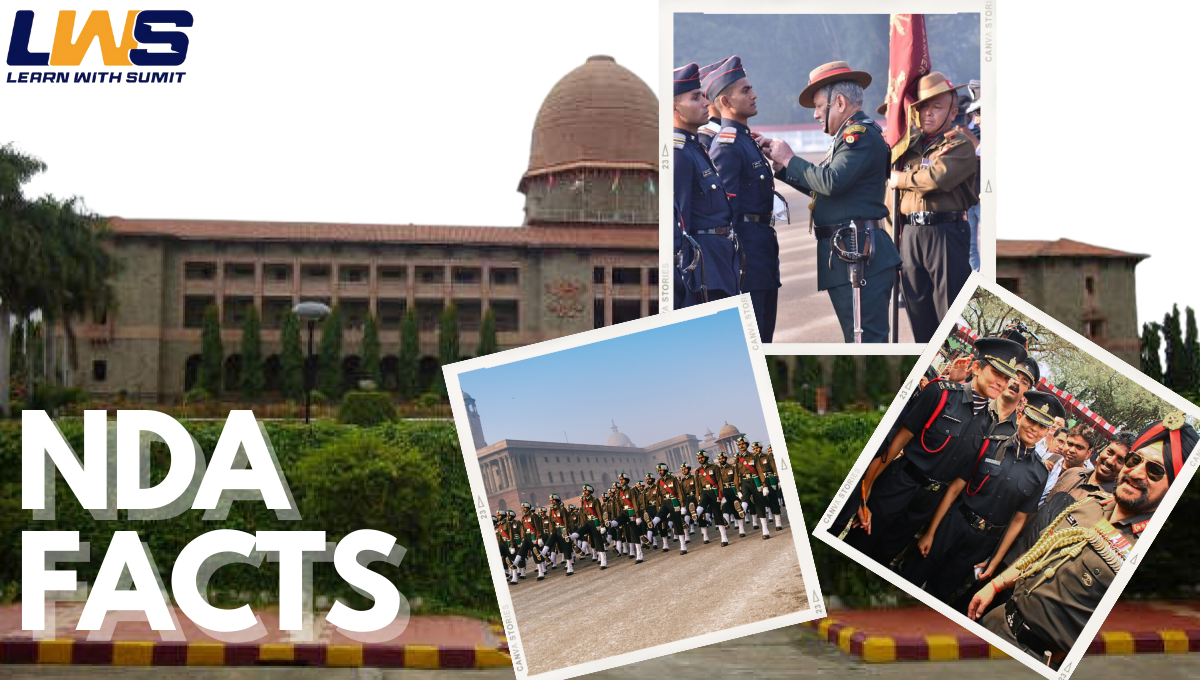National Defence Academy ( History of NDA ) is an Iconic Institution and a global name of excellence in the field of training for soldiers. Through the years it has established itself as an exceptional military academy, attracting the finest of the young from both our country and foreign nations, and making their talents into gentlemen officers.
In the seven years of its glory, National Defence Academy ( History of NDA ) has increased in both splendor and elegance. From its doors have emerged “The Men’s Leaders and have proven the importance of inter-service camaraderie and cooperation, while demonstrating the belief and the vision of its founders.
Alumni have proven to be outstanding mountaineers, scientists, cosmonauts, researchers and creative writers, artists, and most recently, Olympic champions. Their achievements are all over the place and exhibited throughout the ranks in the Armed Forces and also in civilian society.
The ‘cradle’ indeed brought out the young and helped them develop into “leaders” who performed to the standards of its ethos:
The Concept ( History of NDA )
The idea for the NDA was first conceived following the end of the Second World war. Six years of grueling combat had clearly highlighted the importance of “jointness” in modern war.
It was believed in the past and rightly so that it was the primary element of synergy which gives an advantage when in a conflict. When it was first introduced, at the time of its creation the idea behind NDA was a unique and revolutionary idea that was way ahead of the times.
Indeed, it was so thrilling and innovative was the idea that nations viewed it with a keen curiosity to discover how it would play out in reality.
It was the Government of Sudan in 1941 that offered a generous grant of one hundred thousand dollars to Lord Linlithgow Viceroy of India for the purpose of constructing the war memorial to remember the sacrifices made by the Indian troops during the Second World War for the freedom of Sudan.
This fund was later used to construct the Sudan Block which is the most impressive building for the National Defence Academy ( History of NDA ). On May 02nd, 1945, the Committee was set up under the chairmanship of the Commander-in-Chief, India Field Marshal Sir Claude J Auchinleck, GCB, GCIE, DSO, OBE well-known as ‘Auk’.
Its purpose was to investigate the possibility of creating an institution that had outstanding facilities to train the members of the Armed Forces jointly. Numerous foreign training institutions were visited to assess the effectiveness of their operations and to develop an idea for the creation of an Indian War Academy.
The Committee

The committee comprised those who were:
- This is the Chief of General Staff.
- The Officers Commanding the Royal Indian Navy.
- The Commanding Officers of the Air the Royal Indian Air Force.
- Secretary of Secretary to Government of India, War Department.
- Education Advisor for India’s Government of India.
- Sir Mirza Mohammed Ismail, Prime Minister, Jaipur State.
- Rao Bahadur Rao Raja Narpat Singh, Jodhpur.
- Professor Amarnath Jha, Vice Chancellor, Allahabad University *.
- Khan Bahadur Mian Afzal Hussian was the Vice-Chancellor at Punjab University.
- WX Mascarenhas Director, College of Engineering, Poona.
- AE Foot, Headmaster, Doon School, Dehradun.
* Dr. Amarnath Jha was appointed Vice Chairman of the committee which was involved in the plan for 16 months, from 23 July 1945 until 12 November 1946.
“Auk” was no longer the Commander-in-Chief of the united Indian Armed Forces on 15 August 1947. The plan of the distinctive Academy design by him remained in storage for approximately eight months.
However, the excitement it created and the alarming lack of vacuum in the officer corps could not permit it to be put away. Indeed, the report’s birth became a crucial necessity. The report was then presented to the Chiefs of Staff Committee in 1947.
The suggestion of the committee for the creation of an Interim Joint Inter-Services Wing at the Indian Military Academy, Dehradun was accepted for execution. A plan of action to establish a permanent war academy in Khadakwasla (Pune) was launched and the Prime Secretary Pandit Jawaharlal Nehru himself laid the foundation stone on October 06, 1949. ( History of NDA )
The front that is the main entrance to the Academy is a genuine Joint Service design. The magnificent Sudan Block looks like an arsenal of the Army. On the right, it is there is the Vyas Library, as well as the Naval Training Team, which resembles an anchor. On the left, The Habibullah Hall appears like an aircraft.
Inauguration
On January 1, 1949, it was the day that Armed Forces Academy had its military academy as well as its Joint Services Wing as well as the Indian Military Academy and the Joint Services Wing were commissioned. In the following two years, after education at JSW The Army Cadets were transferred to the Military Wing for a second two-year training pre-commission. ( History of NDA )
The Naval and Air force cadets were taken for training at Dartmouth and Cranwell in the UK to receive advanced training. The 7th December of 1954 was the process of interim formation culminated with the official opening of the National Defence Academy ( History of NDA ) was officially inaugurated on January 16, 1955.
Why Khadakwasla
National Defence Academy ( History of NDA ) is located on the southwest side of Pune city as well as northwest of Khadakwasla Lake on 7015 acres of land. It is part of the 8022 acres of land donated by the government of the former Bombay state. ( History of NDA )
Other sites that were suggested included Bombay (particularly Marve), Bangalore, Dehradun, Belgium, Deolali (Nashik), Puri, Secunderabad, and Vizag.
Pune was chosen following carefully considered consideration of its arid climate as well as its suitability for military training, proximity to the Arabian sea, and proximity to the Arabian.
The operational existence of a training facility and an a mock landing ship’ HMS Angostura located on the northern bank of Khadakwasla Lake lent additional leverage to the claims of Khadakwasla over other candidates to be chosen as the site of the highly regarded NDA which has the formidable Sinhagad Fort as a panoramic background. ( History of NDA )
Operation Badli

Operation “Badli” was the code for the huge move of Dehradun towards Khadakwasla, Pune. The word “Dehradun” originates from the etymological origin that is “Dera-Drona” which is also known as the “Camp of Drona’. ( History of NDAhttps://learnwithsumit.in/contact-us/ )
The move of the central point of this Academy from the old Camp in Drona and moving it to Khadkwasla wasn’t without symbolic significance in the context of military history. Khadakwasla is located in the middle of the Sahyadri Mountains in the Western Watershed of the Mula River Valley.
It is situated 12 miles away from Pune (former Poona of the Raj days)and is the 200-year ancient administrative capital of the Peshwas. This Khadakwasla Complex is highlighted by the massive blue skyline of Sinhgarh Fort. ( History of NDA )
It towers over the Academy like a giant with an imposing iconic appearance. It’s a peak that has individuality. Its blue mountain is the famed Sinhgarh fort that Tanaji Mlusare, the favorite General of Shivaji was able to capture from the Moghuls in an incredible and daring attack into a cliff.
It is interesting to note that the NDA was a descendent of the old Camp that was part of Drona (of the Mahabharata fame) and moved to Shivaji’s seat during his army during the Indian Military Revival which took place close to Pune.
The standard of the organization, as well as execution for Operation Badli, can be gauged from the astounding extent of the cost of the damage was ‘Rupees Five only”! ( History of NDA )











